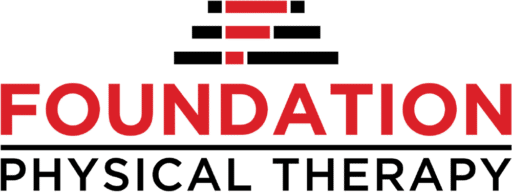
The mighty knee, a marvel of engineering that propels us through life, houses a valuable treasure: the patellofemoral joint. Where the kneecap (patella) glides over the thighbone (femur), this intricate interplay of bone, cartilage, and ligaments can be susceptible to a common foe – patellofemoral pain syndrome (PFPS).
PFPS, often known as “runner’s knee” or “jumper’s knee,” manifests as a dull ache around the kneecap, worsening with activities like climbing stairs or squatting. While once considered a mere nuisance, today, advancements in orthopedic care offer hope for tackling this once persistent pain.
Understanding Knee and Patellofemoral Injuries: A Guide to Powerful Joints
The knee, a complex symphony of bones, ligaments, and cartilage, holds the key to our mobility. It propels us through life, carrying us from leisurely walks to vigorous sprints. Within this intricate masterpiece lies a vital region – the patellofemoral joint. Where the kneecap (patella) glides over the thighbone (femur) can be susceptible to a range of injuries, impacting our active lives.
The Breadth of Knee Injuries: A Landscape of Challenges

Knee injuries are prevalent, affecting people of all ages and activity levels. This vast landscape encompasses.
- Ligament Sprains: The most common type, occurring when ligaments around the knee joint stretch or tear due to sudden twists or impacts.
- Meniscal Tears: The crescent-shaped cartilage cushions within the knee can tear due to trauma or wear and tear, causing pain and instability.
- Tendinitis: Inflammation of the tendons connecting muscles to bone, particularly around the kneecap and patellar tendon.
- Fractures: Bone breaks in the knee area, often requiring surgical intervention for proper healing.
Spotlight on the Patellofemoral Joint
The patellofemoral joint deserves special attention due to its intricate structure and susceptibility to pain. Key elements include:
- Patella (Kneecap): A floating bone gliding over the femur, stabilized by surrounding muscles and ligaments.
- Femur: The main bone of the thighbone, providing the surface for the patella to track.
- Quadriceps Muscle: Powerful muscles extending the knee, connected to the patella via the patellar tendon.
- Patellofemoral Cartilage: Smooth cartilage lining the surfaces of the patella and femur, allowing for frictionless movement.
This delicate interplay can be disrupted by various factors, leading to:
- Patellar Malalignment: Misalignment of the patella on the femur- which can happen in individuals that are hypermobile or experience a patellar dislocation- can cause pain and tracking issues.
- Muscle Imbalance: Weak or tight muscles affecting the patella’s movement can lead to overload and discomfort.
- Overuse: Repetitive strain on the patellofemoral joint, common in athletes, can trigger inflammation and pain.
Diagnosing Knee and Patellofemoral Pain: Unveiling the Hidden Puzzle
While sophisticated tools play a vital role, a skilled healthcare professional is the conductor of the diagnostic symphony. They interpret the findings, considering your individual circumstances and medical history. Their expertise lies in:
- Correlating Clinical Findings with Imaging Results: A trained eye can decipher the nuanced details gleaned from scans and tests.
- Differentiating Between Various Conditions: Knee pain can stem from multiple sources, and accurately distinguishing between them is crucial for appropriate treatment.
- Ordering Further Tests when Necessary: In certain cases, other investigations may be required to rule out additional concerns.
- Communicating the Diagnosis Clearly and Empathetically: Understanding your condition and treatment options empowers you to actively participate in your recovery journey.
Treatment Modalities for Knee and Patellofemoral Pain: From Gentle Rehab to Cutting-Edge Interventions
The Symphony of Rehabilitation: Physical Therapy Takes Center Stage
Physical therapy forms the cornerstone of most knee and patellofemoral pain treatment plans. Led by skilled therapists, this practice offers a personalized score of exercises and techniques designed to:
- Reduce Pain and Inflammation: Cryotherapy, heat therapy, elevation and treatments like manual therapy or electrical stimulation help to reduce swelling and pain.
- Restore Strength and Flexibility: Targeted exercises strengthen stabilizing muscles, improve joint mobility, and correct muscle imbalances.
- Enhance Balance and Proprioception: Specific exercises retrain your sense of awareness and stability within the joint, preventing future falls.
- Educate and Empower: Therapists equip you with self-management techniques and exercises to maintain progress and prevent re-injury.
Preventive Measures: Muting the Melody of Knee Pain Before It Plays.
Tuning Out the Risk Factors: Lifestyle Adjustments for Knee Health
Certain lifestyle choices act like off-key notes, increasing your vulnerability to knee pain. Recognizing and adjusting these factors can significantly reduce your risk:
- Excessive Weight: Carrying extra pounds puts additional strain on your knee joints, accelerating wear and tear. Maintaining a healthy weight through diet and exercise is crucial for knee health.
- Improper Footwear: Poorly fitting or unsupportive shoes can disrupt your gait and alignment, leading to imbalances and potential injuries. Choosing appropriate footwear for your activity level is essential.
- Inactivity: A sedentary lifestyle weakens muscles and decreases joint flexibility, making you more susceptible to injuries. Regular physical activity strengthens your knees and promotes optimal joint function.
- Overuse: Repetitive strain from intense or prolonged activity without proper rest and recovery can overload your knees and trigger pain. Listen to your body and incorporate rest days into your routine.
- Muscle Imbalances: Weak or tight muscles around the knee can lead to improper joint mechanics and instability. Strength training exercises targeting all muscle groups surrounding the knee are key to promoting balanced support.
Playing the Preventive Scale: Exercises for Strong and Stable Knees

- Quadriceps Strengthening: Exercises like squats, leg extensions, and lunges build strong muscles that support and stabilize the knee joint.
- Hamstring Stretches: Flexible hamstrings improve balance and prevent tightness that can contribute to patellar tracking issues.
- Calf Raises: Strong calf muscles enhance shock absorption and support overall knee stability.
- Hip Strengthening: Your hip muscles play a vital role in controlling the motion of the thigh bone (femur) which acts like the train track for your knee cap to glide on. Poor strength and control through these muscles is a major factor that influences the development of knee pain.
- Balance Exercises: Activities like single-leg stands and wobble board challenges improve proprioception and prevent falls, a common cause of knee injuries.
Mastering the Form: Biomechanics as the Conductor of Injury Prevention
Just as improper technique can lead to discordant music, poor biomechanics during exercise or daily activities can invite knee pain. Focusing on proper form is crucial:
- Maintaining Knee Alignment: Avoid inward or outward knee tracking during squats, lunges, or other exercises.
- Engaging your Core: A strong core stabilizes your entire body, preventing excessive strain on the knees.
- Listening to your Body: Pain is a signal – pause any activity that causes pain and adjust your form or seek professional guidance.
- Consulting a Therapist: A physical therapist can assess your biomechanics and provide personalized exercises to address any imbalances or improper movement patterns.
Empowering Movement: Self-Care, Advocacy, and a Harmony of Healthy Knees
The Rhythm of Relief: Practical Pain Management Techniques

- POLICE protocol: Protection, optimal loading, ice, compression and elevation remain foundational pain relief measures. Modify activity, apply ice packs intermittently and in short durations, use supportive bandages, and elevate your knee for optimal recovery.
- Heat Therapy: After the initial inflammatory phase, applying heat may improve blood flow and loosen stiff muscles. Use caution to avoid burns and consult your doctor if unsure.
- Stretching and Gentle Exercises: Light mobility exercises prescribed by a physical therapist can maintain flexibility and prevent stiffness. Avoid pushing through pain and prioritize gentle movements.
REFERENCES
- American Academy of Orthopaedic Surgeons: https://www.aaos.org/
- National Institute of Arthritis and Musculoskeletal and Skin Diseases: https://www.niams.nih.gov/
- Mayo Clinic: https://www.mayoclinic.org/
- American College of Physicians: http://www.acponline.org/
- British Medical Journal: https://www.bmj.com/
- National Center for Biotechnology Information: https://www.ncbi.nlm.nih.gov/


